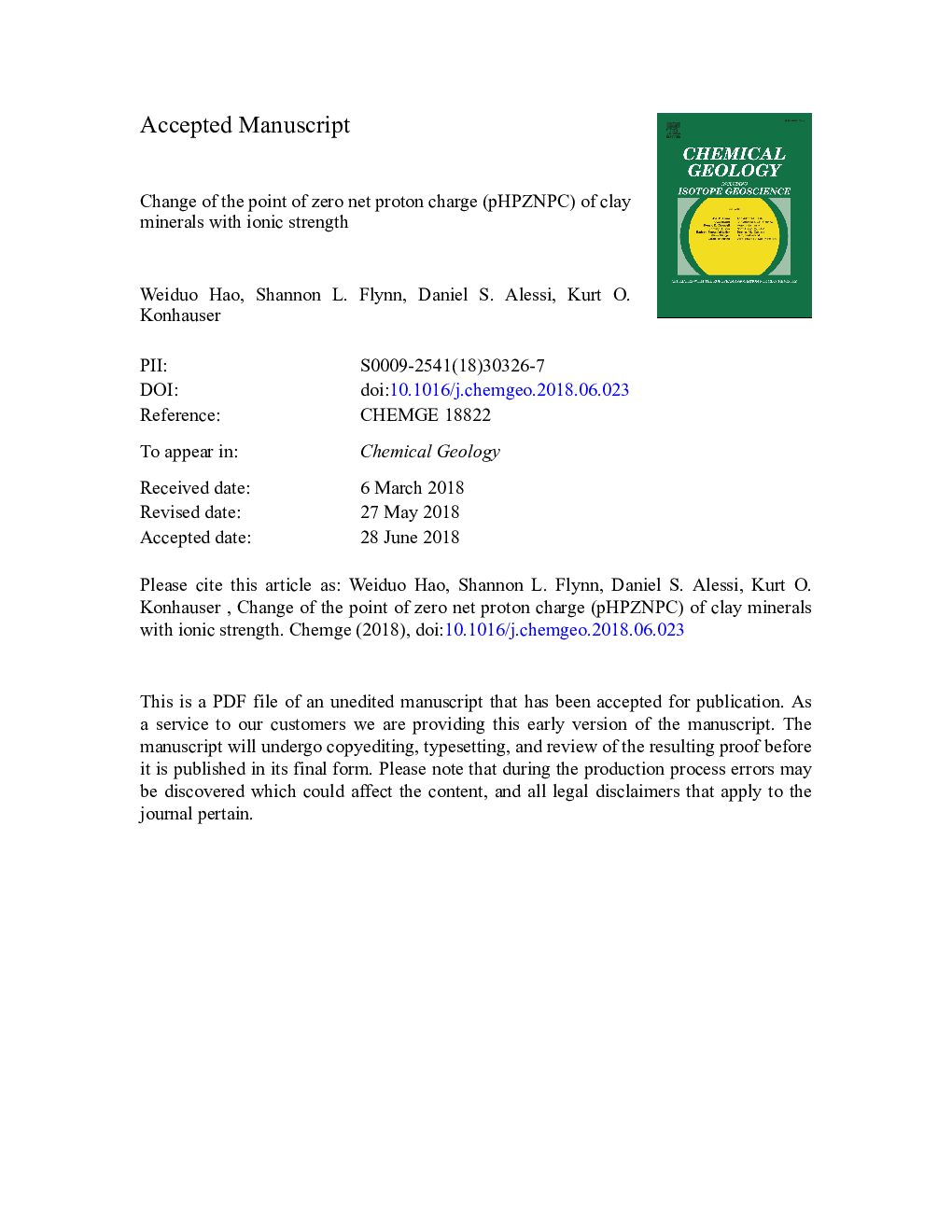| کد مقاله | کد نشریه | سال انتشار | مقاله انگلیسی | نسخه تمام متن |
|---|---|---|---|---|
| 8910163 | 1637481 | 2018 | 32 صفحه PDF | دانلود رایگان |
عنوان انگلیسی مقاله ISI
Change of the point of zero net proton charge (pHPZNPC) of clay minerals with ionic strength
دانلود مقاله + سفارش ترجمه
دانلود مقاله ISI انگلیسی
رایگان برای ایرانیان
موضوعات مرتبط
مهندسی و علوم پایه
علوم زمین و سیارات
ژئوشیمی و پترولوژی
پیش نمایش صفحه اول مقاله

چکیده انگلیسی
In a system where protons and hydroxide ions are the only aqueous species, the point of zero net proton charge (pHPZNPC) of a mineral defines the pH at which the positively and negatively charged functional groups on its surface are equal (Drever, 1997). Ascertaining the pHPZNPC of clay minerals, a ubiquitous component in soils, sediment and rivers, is useful in predicting its electrostatic interactions with charged aqueous species, colloids, and bacteria. While the pHPZNPC values of most clays have been reported, the variation of pHPZNPC with changing solution ionic strength (IS) and the mathematic relationship between them are not well-understood but critical in assessing the surface reactivity of clays in aqueous solutions ranging from freshwater to brines. To address this gap, we studied the relationship of the pHPZNPC of three clay minerals (kaolinite, illite, and montmorillonite) at seven ionic strengths (from 0.001 to 0.1â¯M). Titration data for each clay were used to calculate the pHPZNPC by two methods previously documented in literature: (1) using the difference between the blank titration and clay titrations, and (2) by the difference between the number of protons added during titration and the number of protons remaining in solution. The results show that: (1) unlike simple metal oxides (e.g., hematite, gibbsite, quartz), titration curves of clay minerals at different IS do not intersect at a common pHPZNPC value; (2) the pHPZNPC for kaolinite is around 5.6 to 6.6 while the pHPZNPC for illite and montmorillonite is in the range of 9 to10; (3) the pHPZNPC value decreases systematically with increasing IS for all three clay minerals studied; and (4) the change of pHPZNPC is linear with log(IS). A third method using surface complexation modeling (SCM) approach was applied to calculate the pHPZNPC of the clay minerals, and the results match well with Method 2. Our results allow for a more accurate estimation of clay surface charge property in aqueous environment, which, in turn, will improve model predictions of the adsorption of charged species in systems in which ionic strength changes.
ناشر
Database: Elsevier - ScienceDirect (ساینس دایرکت)
Journal: Chemical Geology - Volume 493, 20 August 2018, Pages 458-467
Journal: Chemical Geology - Volume 493, 20 August 2018, Pages 458-467
نویسندگان
Weiduo Hao, Shannon L. Flynn, Daniel S. Alessi, Kurt O. Konhauser,